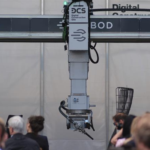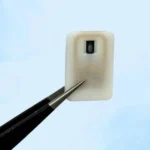Researchers have been looking into ways to defeat cyberattacks on 3D printers. A study by Rutgers and Georgia Tech gives users a few tips on how to find out whether your 3D printer has been hacked or not.
The research is pertinent to any company that wants to protect their prints. While many different protection software exist, anti-hacking measures are not always successful. This research makes sure that users can detect when their 3D printer and thus their 3D prints have been interfered with. The research focuses on the detecting defects within the print rather than encrypting files or disconnecting from the Internet (as other studies have suggested).
How to Detect 3D Printer Hacking?

The researchers detailed methods that emphasise detection as opposed to prevention. As a result, these methods have more to do with checking the steady operation of the printer and the end prints. The first way is to monitor the sounds made by the printer and comparing them to their normal operating noise. The researchers have suggested that users should keep a recorded file on hand to judge the difference.
Another means of detection relies on a similar strategy but in a more visual context. The researchers have suggested that users keep track of how the printer’s extruder is moving. If the motion is stunted or stalling occasionally, it may be hacked. While stalling, inconsistent output and stuttering in the extruder can be a sign of problems other than hacking, it is still something worth keeping in mind. Similar to the previous method, users should keep a recording of the standard operations of the printer for comparison.
Gold Nanoparticles
The third method relies on observing the print as opposed to the printer or its operations. According to the researchers, gold nanoparticles can serve as ‘contrast agents’ for whoever may want to check the quality of the print. The use of gold nanoparticles is a known method in oncology for detecting tumours and abnormalities. Basically, companies can scan these nanoparticles to ensure that they are consistent with the original design. If they are misplaced or uneven, it’s a good sign that the print was altered.
Each nanoparticle is a few microns in diameter so it won’t interfere with the design of the print. It would obviously have to be a part of the filament. It also relies on the companies having the scanning equipment required to image them. In this regard, the nanoparticles act like other contrast agents like those used to detect medical abnormalities.
Protecting Prints Against Tampering or Hackers
The researchers used various instruments to arrive at their conclusions. They monitored the printers using microphones and sensors and isolated the main differences between a hacked 3D printer and an operational one. Previously, researchers had hacked multiple printers including Lulzbot Taz 6, Lulzbot Mini, and an Orion Delta to demonstrate that this can be an industry-wide problem if left alone.
It’s easy to see why companies are antsy about copyright and design tampering. Security concerns have been at a fever pitch since companies like HBO and Netflix have been losing their digital data. It’s only a matter of time till 3D printing is profitable enough to pirate models from major companies.
This is not the first time we’ve covered security concerns when it comes to 3D printing. In fact, its become somewhat of a growing market. GROW, for example, is a cloud platform designed to secure and track all interactions with a user’s models.
Similarly, Create it Real has developed a processor that decrypts files and matches them to any copyrighted designs. This processor relies on a cloud platform with a large database of models. These sorts of security solutions against theft and unwanted changes represent a shift in 3D printing towards more professional and industrial purposes. Going forward, we’ll eventually see more research and more discussions on the topic.











